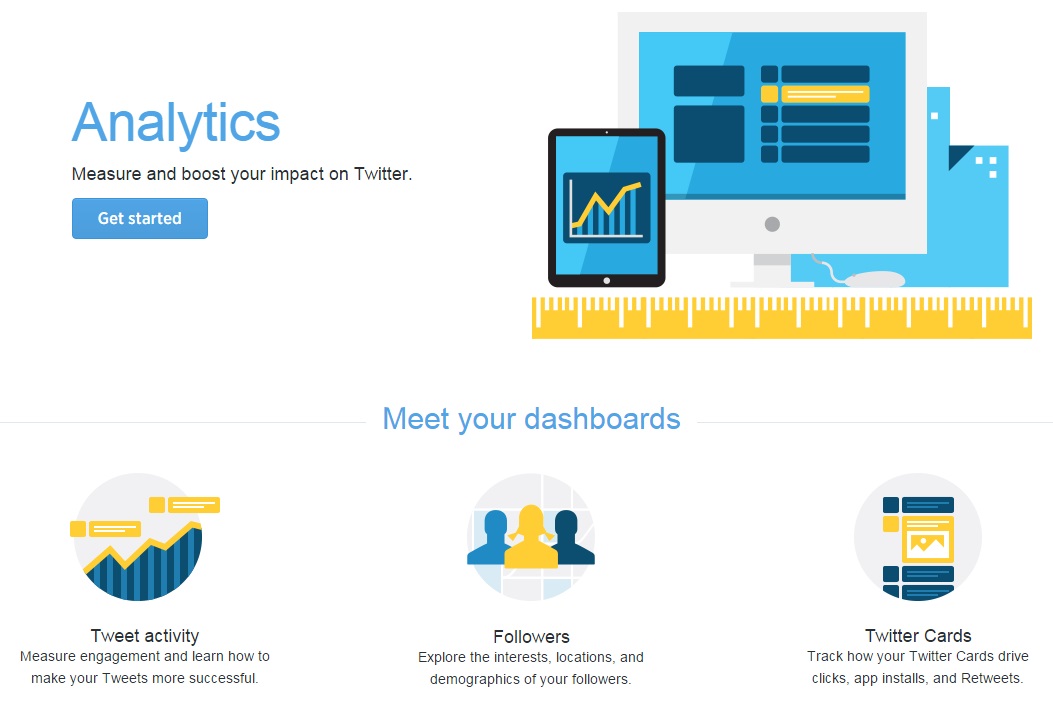Being Trained by Twitter Stats: Social Media and the Expanding Ways we are Measured in Everyday Life

A few days ago I noticed that my Tweets suddenly had a small bar chart in the bottom right hand corner. Clicking on it revealed a new set of statistics about that particular tweet. Labelled simply on Twitter as ‘View Tweet Activity’, these statistics provide a breakdown of the performance of each of your Tweets. Your ability to connect with people is suddenly quantified. These activity stats capture the number of people that happen, in the unrelenting flow of their timeline, to have scrolled past your Tweet. This is accompanied by an overall score for ‘Total Engagements’ – which can be viewed in detail to reveal the number of times people clicked on any links in your Tweet, the number of ‘detail expands’, the number of ‘media engagements’ (with any images included), the number of times that people clicked from the Tweet to your profile page and so on. These are not complex statistics, but it is difficult to conclude anything other than that their presence is aimed at guiding the self-training user in how to be a more effective social media participant.
On the surface, this may seem a fairly innocuous development. But it is a move towards enabling us to more readily assess our own performance on this particular social media platform. Instead of just aimlessly firing Tweets out, we are now able to quickly see which types of Tweet circulate and which utterances provoke action amongst our followers. We have always had this type of guidance in retweets and likes, but now we have the extra insights into the actual activity that our Tweets instigate. It seems that we are being encouraged to analyse our own performance and to adapt accordingly – which brings new pressures and new visibilities. We have to wonder if this set of instant metrics will change the way that people will use Twitter. We are, after all, likely to adapt our conduct and our content as we see what does well and what fails.
All of this could be seen as being part of the broader metricisation of society. There is a long standing desire to measure people and populations. Social media and mobile devices have created the perfect conditions for expanding the ways we are measured. The Twitter stats show how embedded this is in our everyday lives. It is indicative of how we, it would seem, like to be measured and counted, to quantify ourselves and our successes.
In separate books, Philip Mirowski and Wendy Brown have both placed social media forms at the centre of the formation of our destabilised neoliberal identities. They see the social media profile as being based around an imperative for us to hone our competitive skills and to secure our value in the market driven mediated environments in which we live. These new Twitter metrics might allow us to extend such arguments further and to see more explicitly that these media are the archetypal resource for the self-training entrepreneurial subject. They are the tools of the entrepreneurial self. These Twitter stats give us the means to refine or hone our content, to have competitive profiles, to draw attention and to enhance our value. These types of stats are just the sort of thing you would expect to find where you have self-training participants who are keen to measure and adapt their performance. As we respond to performance metrics in our workplaces, so too we are now expected to react to performance measures in our leisure, communication and friendship networks.

The options for the entrepreneurial and keen social media user do not end there. If you are thirsty for more metrics based guidance on your social media performance, you can always visit the Twitter analytics dashboard to get a month-by-month breakdown of your personal Twitter metrics. We should wonder what all these metrics will mean for the way that we interact with each other and for how we understand and judge ourselves. Albeit in an oversimplified and crass form, we have now reached a point where we can quantify and study the impact of what we say. We might reflect on what this will mean for how people relate to one another, what they say and how they say it. With these types of openly available metrics we have to wonder how our actions and identities will come to be shaped by the presence of these numbers and our eagerness to perform a successful and valued identity. In the way that we arecajoled and guided by metrics in our work, shaping our behaviour to fit how we are measured, the new Twitter metrics will not just measure what we do on Twitter they will also produce and guide our Tweeting. We might also wonder how in the future these types of metrics will be used to judge the value of what we have to say and the scale of response that we provoke.
This article first appeared on the British Policy and Politics blog: http://blogs.lse.ac.uk/politicsandpolicy/being-trained-by-twitter-stats-social-media-and-the-expanding-ways-we-are-measured-in-everyday-life/
